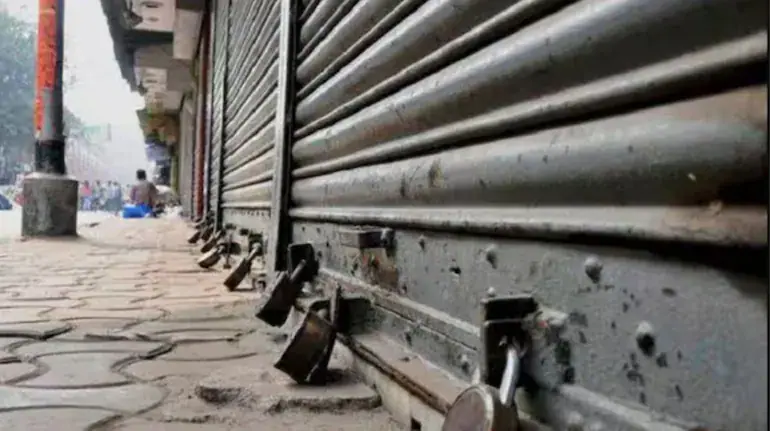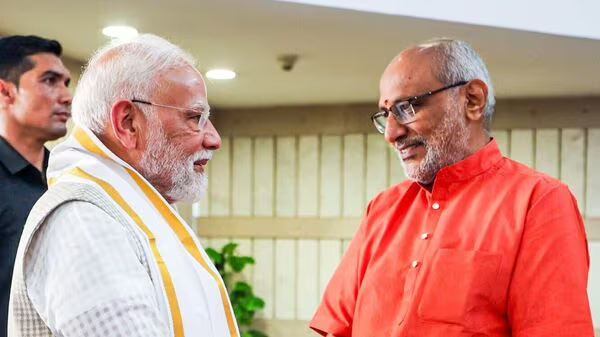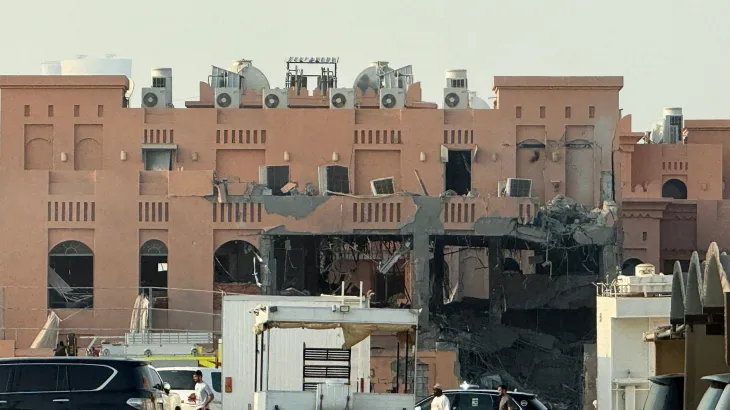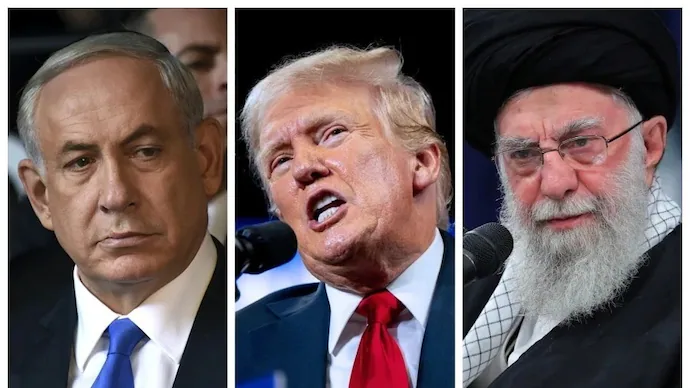India nationwide strike 2025: What Remains Open and What Shuts Down — Full Overview

India witnessed a nationwide strike or Bharat Bandh spearheaded by a joint platform of trade unions, worker federations, and farmer alliances. The day-long bandh, one of the largest industrial actions in recent years, is being held in protest against a series of government reforms that workers say threaten their rights, weaken labour protections, and promote unchecked privatization. According to organizers, the bandh has mobilized an estimated 25 crore (250 million) workers across various sectors, making it a massive display of collective discontent.
The organizers of the bandh including 10 central trade unions such as INTUC, AITUC, CITU, HMS, and AICCTU have framed a 17-point charter of demands. Central among their grievances is opposition to the four new labour codes passed by the Centre, which the unions argue diminish workers’ bargaining powers, dilute safeguards related to job security, and increase contractualization. Other demands include:
The reversal of privatization in strategic sectors including banks, railways, and public sector undertakings.
Immediate steps to curb unemployment and inflation.
Restoration of the Old Pension Scheme.
Greater funding and workdays under the MGNREGA employment guarantee scheme.
Recruitment for vacant posts in central and state governments.
Holding of the long-delayed Indian Labour Conference, pending since 2015.
Furthermore, the protest has been joined by the Samyukta Kisan Morcha (SKM) a coalition of over 40 farmers’ groups which amplifies rural voices against what they describe as anti-farmer economic policies.
The bandh has caused widespread disruptions across the country, particularly in public services and heavily unionized sectors.
Public and cooperative banks have been among the most affected. Services such as cheque clearing, loan processing, and branch operations have slowed significantly or come to a halt in many places. Bank unions like AIBEA and BEFI have joined the protest, affecting core financial operations throughout the country.
In several states, state-run bus services have either been suspended or are running on reduced schedules. In Kerala, West Bengal, and parts of Tamil Nadu, roads were noticeably empty as public transport remained sparse. Although there has been no official call for a railway strike, rail services in some areas faced delays due to protestors staging blockades near stations and tracks.
Employees from postal departments and telecom services also joined the bandh. This led to delays in mail delivery, reduced customer service availability, and disruptions in back-office operations.
Industries involving coal mining, steel production, construction, and shipbuilding have reported high absenteeism. In key industrial belts, production was halted or severely affected. The Coal India workforce, which plays a vital role in the country’s energy production, showed significant participation, raising concerns about short-term supply hiccups.
The power sector also saw widespread worker participation. With around 2.7 million workers engaged in the electricity and energy sectors, there have been reports of power outages or fluctuations in select areas. Many electricity board employees observed the bandh, leading to delayed maintenance and support services.
Retail shops, small businesses, and local markets remained shut in cities like Kolkata, Thiruvananthapuram, Kochi, and parts of Bengaluru. In industrial towns and union-dominated regions, the bandh’s impact was more visible, with malls and shopping complexes also remaining closed.
Despite the disruptions, several essential and private services continued to function relatively normally:
Educational Institutions: While some schools and colleges in affected regions were closed as a precautionary measure, most educational institutions remained open. There was no blanket closure mandate from the Centre or state governments.
Healthcare Services: Emergency services, hospitals, and medical stores operated without major disturbances. Healthcare unions did not participate in the bandh, allowing essential services to remain intact.
Private Offices and IT Firms: Most private sector offices, especially in metros, were open. Companies adopted work-from-home policies in cities where commute was difficult.
Stock Markets: The NSE and BSE functioned normally, with trading continuing as scheduled. There was no disruption to financial markets or SEBI-regulated institutions.
Online Services and E-Commerce: While last-mile delivery services experienced some delays due to transport issues, e-commerce platforms and IT-enabled services remained unaffected on the whole.
The bandh's impact varied across states:
In Kerala, the bandh was near-total, with buses off roads, markets shut, and roads deserted. Left-backed trade unions have traditionally enjoyed strong support in the state.
West Bengal saw partial shutdowns, especially in Siliguri and industrial suburbs of Kolkata, despite the ruling TMC not endorsing the strike.
In Tamil Nadu, cities like Chennai witnessed sporadic protests, but state transport ran with limited interruptions.
Punjab and Haryana saw farmers joining in with sit-in demonstrations and dharnas outside government offices and toll plazas.
Maharashtra and Gujarat saw mixed responses, with lower participation in urban centers but higher disruption in industrial zones.
The Bharat Bandh of July 9, 2025, has emerged as a significant expression of unrest among India’s working class, farmers, and public-sector employees. While its direct economic impact may be difficult to quantify immediately, the protest has served as a political message to the government that concerns around labour reforms, privatization, inflation, and employment remain unresolved.
Though life in major metros was not brought to a complete halt, the bandh disrupted critical services and highlighted the growing discontent among vast sections of Indian society. Going forward, how the government responds whether through policy review or negotiation will be closely watched by unions, opposition parties, and civil society alike.
The organizers of the bandh including 10 central trade unions such as INTUC, AITUC, CITU, HMS, and AICCTU have framed a 17-point charter of demands. Central among their grievances is opposition to the four new labour codes passed by the Centre, which the unions argue diminish workers’ bargaining powers, dilute safeguards related to job security, and increase contractualization. Other demands include:
The reversal of privatization in strategic sectors including banks, railways, and public sector undertakings.
Immediate steps to curb unemployment and inflation.
Restoration of the Old Pension Scheme.
Greater funding and workdays under the MGNREGA employment guarantee scheme.
Recruitment for vacant posts in central and state governments.
Holding of the long-delayed Indian Labour Conference, pending since 2015.
Furthermore, the protest has been joined by the Samyukta Kisan Morcha (SKM) a coalition of over 40 farmers’ groups which amplifies rural voices against what they describe as anti-farmer economic policies.
The bandh has caused widespread disruptions across the country, particularly in public services and heavily unionized sectors.
Public and cooperative banks have been among the most affected. Services such as cheque clearing, loan processing, and branch operations have slowed significantly or come to a halt in many places. Bank unions like AIBEA and BEFI have joined the protest, affecting core financial operations throughout the country.
In several states, state-run bus services have either been suspended or are running on reduced schedules. In Kerala, West Bengal, and parts of Tamil Nadu, roads were noticeably empty as public transport remained sparse. Although there has been no official call for a railway strike, rail services in some areas faced delays due to protestors staging blockades near stations and tracks.
Employees from postal departments and telecom services also joined the bandh. This led to delays in mail delivery, reduced customer service availability, and disruptions in back-office operations.
Industries involving coal mining, steel production, construction, and shipbuilding have reported high absenteeism. In key industrial belts, production was halted or severely affected. The Coal India workforce, which plays a vital role in the country’s energy production, showed significant participation, raising concerns about short-term supply hiccups.
The power sector also saw widespread worker participation. With around 2.7 million workers engaged in the electricity and energy sectors, there have been reports of power outages or fluctuations in select areas. Many electricity board employees observed the bandh, leading to delayed maintenance and support services.
Retail shops, small businesses, and local markets remained shut in cities like Kolkata, Thiruvananthapuram, Kochi, and parts of Bengaluru. In industrial towns and union-dominated regions, the bandh’s impact was more visible, with malls and shopping complexes also remaining closed.
Despite the disruptions, several essential and private services continued to function relatively normally:
Educational Institutions: While some schools and colleges in affected regions were closed as a precautionary measure, most educational institutions remained open. There was no blanket closure mandate from the Centre or state governments.
Healthcare Services: Emergency services, hospitals, and medical stores operated without major disturbances. Healthcare unions did not participate in the bandh, allowing essential services to remain intact.
Private Offices and IT Firms: Most private sector offices, especially in metros, were open. Companies adopted work-from-home policies in cities where commute was difficult.
Stock Markets: The NSE and BSE functioned normally, with trading continuing as scheduled. There was no disruption to financial markets or SEBI-regulated institutions.
Online Services and E-Commerce: While last-mile delivery services experienced some delays due to transport issues, e-commerce platforms and IT-enabled services remained unaffected on the whole.
The bandh's impact varied across states:
In Kerala, the bandh was near-total, with buses off roads, markets shut, and roads deserted. Left-backed trade unions have traditionally enjoyed strong support in the state.
West Bengal saw partial shutdowns, especially in Siliguri and industrial suburbs of Kolkata, despite the ruling TMC not endorsing the strike.
In Tamil Nadu, cities like Chennai witnessed sporadic protests, but state transport ran with limited interruptions.
Punjab and Haryana saw farmers joining in with sit-in demonstrations and dharnas outside government offices and toll plazas.
Maharashtra and Gujarat saw mixed responses, with lower participation in urban centers but higher disruption in industrial zones.
The Bharat Bandh of July 9, 2025, has emerged as a significant expression of unrest among India’s working class, farmers, and public-sector employees. While its direct economic impact may be difficult to quantify immediately, the protest has served as a political message to the government that concerns around labour reforms, privatization, inflation, and employment remain unresolved.
Though life in major metros was not brought to a complete halt, the bandh disrupted critical services and highlighted the growing discontent among vast sections of Indian society. Going forward, how the government responds whether through policy review or negotiation will be closely watched by unions, opposition parties, and civil society alike.







